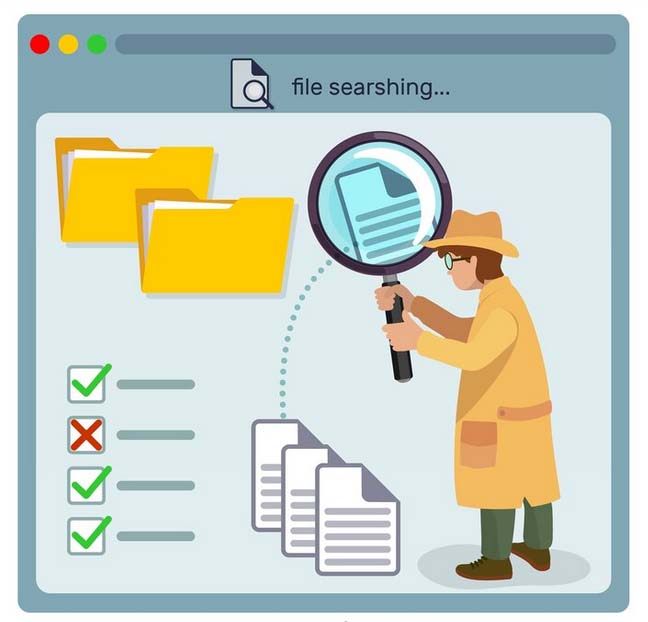CCMS vs Spreadsheets: Why Companies Are Moving to Digital Change Management
Spreadsheets have long been a staple in business environments, often serving as the go-to tool for managing data and processes. However, when it comes to change management, their limitations become glaringly apparent. One of the primary drawbacks is the lack of real-time collaboration.
In a dynamic business landscape, changes can occur rapidly, and teams need to be able to respond immediately. Spreadsheets, typically stored on local drives or shared folders, do not facilitate simultaneous updates. This can lead to version control issues, where team members may be working off outdated information, resulting in miscommunication and errors that can derail change initiatives.
Moreover, spreadsheets are inherently prone to human error. Data entry mistakes, formula miscalculations, and accidental deletions can compromise the integrity of the information being tracked. In change management, where precision is critical, these errors can have significant repercussions.
For instance, if a project manager miscalculates the timeline for a change implementation due to a spreadsheet error, it could lead to missed deadlines and increased costs. Additionally, the manual nature of updating spreadsheets can be time-consuming and tedious, diverting valuable resources away from more strategic activities that could drive organizational growth. With one central platform, Havteq CCMS ensures every change is logged, approved, tracked and archived — keeping you audit ready and in control. Contact for free demo.
Key Takeaways
- Spreadsheets have significant limitations and security risks in managing change processes effectively.
- Change Control Management System (CCMS) offer streamlined workflows and improved scalability for growing businesses.
- CCMS integrates seamlessly with other business systems, enhancing overall operational efficiency.
- Using spreadsheets for change management can lead to higher costs and increased risk of errors.
- The future of change management lies in adopting digital solutions like CCMS for better control and security.
The Benefits of Change Control Management System (CCMS)
Change Control Management System (CCMS) offer a robust alternative to traditional spreadsheet methods, providing a structured framework for managing changes within an organization.
- One of the most significant benefits of CCMS is its ability to centralize information. Unlike spreadsheets that can become fragmented across various departments and teams, a CCMS consolidates all change-related data into a single platform. This centralization not only enhances visibility but also ensures that all stakeholders have access to the most current information, fostering better communication and collaboration.
- Another advantage of CCMS is its automation capabilities. Many systems come equipped with features that automate routine tasks such as notifications, approvals, and documentation tracking.This automation reduces the administrative burden on team members and minimizes the risk of human error.
- For example, when a change request is submitted, the CCMS can automatically route it to the appropriate approvers based on predefined workflows. This streamlining of processes not only accelerates decision-making but also enhances accountability, as each step in the change management process is logged and traceable.
How CCMS Streamlines the Change Management Process
The implementation of a Change Control Management System fundamentally transforms how organizations approach change management. By providing a structured workflow for submitting, reviewing, and approving change requests, CCMS eliminates many of the bottlenecks associated with traditional methods. For instance, instead of relying on email chains or physical documents that can easily get lost or overlooked, a CCMS allows users to submit requests through an intuitive interface.

This digital approach ensures that all necessary information is captured upfront, reducing the back-and-forth communication often required to clarify details. Furthermore, CCMS enhances the tracking and reporting capabilities of change management processes. With built-in analytics tools, organizations can monitor the status of change requests in real-time, identify trends, and generate reports that provide insights into the effectiveness of their change initiatives.
For example, if a company notices a high volume of rejected change requests in a particular department, it can investigate further to understand the underlying issues and implement corrective actions. This data-driven approach not only improves the efficiency of change management but also supports continuous improvement efforts across the organization.
The Cost of Using Spreadsheets for Change Management
While spreadsheets may seem like a cost-effective solution for managing changes due to their low initial investment, the hidden costs associated with their use can be substantial. The time spent on manual data entry, error correction, and communication delays can accumulate quickly, leading to increased labor costs. For instance, if a project manager spends several hours each week updating spreadsheets and reconciling discrepancies, this time could be better spent on strategic planning or stakeholder engagement activities that drive value for the organization.
Additionally, the financial implications of errors stemming from spreadsheet use can be significant. A single mistake in a change request could lead to costly project delays or even compliance issues if regulatory requirements are not met. For example, in industries such as pharmaceuticals or aerospace where strict regulatory compliance is mandatory, an oversight in change management could result in fines or legal repercussions that far exceed any savings realized from using spreadsheets.
Therefore, while spreadsheets may appear inexpensive at first glance, their long-term costs can outweigh their initial advantages.
The Security Risks of Using Spreadsheets for Change Management
| Metric | CCMS (Change Control Management System) | Spreadsheets |
|---|---|---|
| Change Request Processing Time | 1-2 days | 5-7 days |
| Error Rate in Change Documentation | Less than 1% | 10-15% |
| Collaboration Efficiency | High (real-time updates, role-based access) | Low (manual updates, version conflicts) |
| Audit and Compliance Readiness | Automated tracking and reporting | Manual tracking, prone to oversight |
| Scalability | Supports large, complex projects | Limited by file size and complexity |
| User Training Time | Moderate (system-specific training) | Low (basic spreadsheet skills) |
| Cost of Ownership | Higher initial investment, lower long-term costs | Low initial cost, higher risk of costly errors |
Security is another critical concern when it comes to using spreadsheets for change management. Spreadsheets are often stored on local drives or shared networks without robust security measures in place. This lack of protection makes them vulnerable to unauthorized access and data breaches.
Sensitive information related to change initiatives—such as project plans, financial data, and proprietary processes—can be easily exposed if proper security protocols are not implemented. Moreover, tracking changes within spreadsheets can be challenging. While some spreadsheet software offers version history features, these are often limited and do not provide comprehensive audit trails necessary for compliance purposes.
In regulated industries where documentation and traceability are paramount, relying on spreadsheets can lead to significant compliance risks. A CCMS addresses these security concerns by offering user authentication protocols, role-based access controls, and detailed audit logs that track every action taken within the system. This level of security not only protects sensitive information but also instills confidence among stakeholders that change management processes are being handled with integrity.
The Integration of CCMS with Other Business Systems
One of the standout features of Change Control Management System is their ability to integrate seamlessly with other business systems. This integration capability is crucial for organizations looking to create a cohesive ecosystem where data flows freely between departments. For instance, a CCMS can be integrated with project management tools, customer relationship management (CRM) systems, and enterprise resource planning (ERP) software to ensure that all relevant stakeholders are informed about changes that may impact their areas of responsibility.

This interconnectedness enhances collaboration across departments and reduces silos that often hinder effective change management. For example, if a product development team initiates a change request related to a new feature based on customer feedback captured in the CRM system, integrating these platforms allows for immediate visibility into how this change will affect timelines and resource allocation across teams. Such integration not only streamlines communication but also fosters a culture of collaboration that is essential for successful change initiatives.
The Future of Change Management: Embracing Digital Solutions
As businesses continue to navigate an increasingly complex landscape characterized by rapid technological advancements and shifting market dynamics, embracing digital solutions for change management will be paramount. The future lies in leveraging sophisticated tools like Change Control Management System that offer enhanced capabilities beyond what traditional methods can provide. Organizations that adopt these digital solutions will be better positioned to respond swiftly to changes while maintaining control over their processes.
Moreover, emerging technologies such as artificial intelligence (AI) and machine learning (ML) are poised to revolutionize change management further by providing predictive analytics that can inform decision-making processes. For instance, AI algorithms could analyze historical data on past changes to identify patterns and predict potential challenges before they arise. This proactive approach will enable organizations to mitigate risks associated with change initiatives effectively.
In conclusion, as businesses evolve in an era defined by digital transformation, the shift from spreadsheets to comprehensive Change Control Management Systems will not only enhance efficiency but also empower organizations to thrive amidst constant change. By embracing these advanced solutions now, companies can lay a solid foundation for future growth and success in an ever-changing business environment.
























